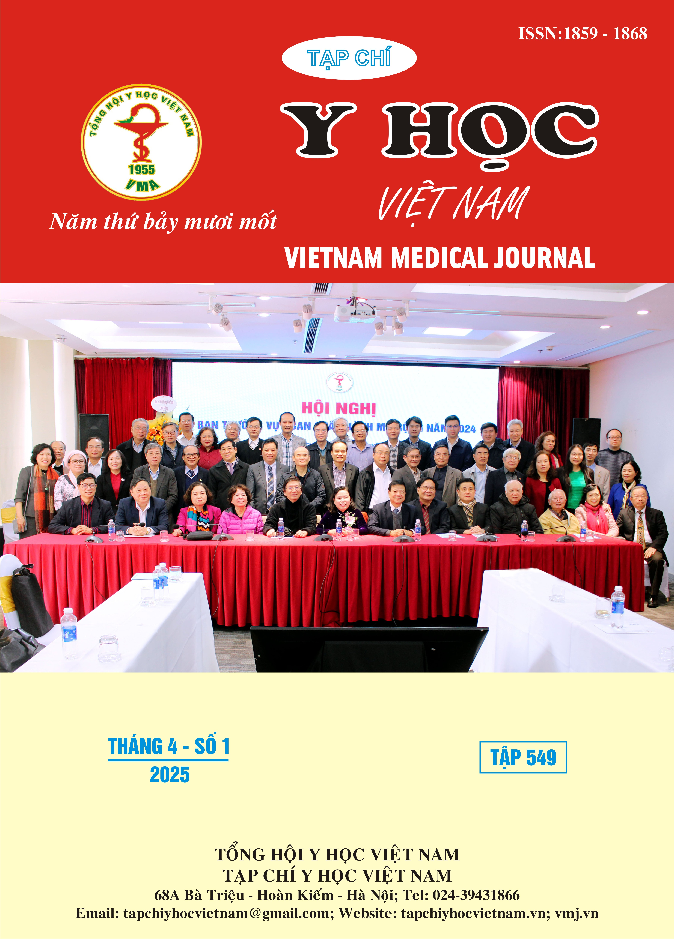SO SÁNH THỜI GIAN THỰC HIỆN ĐỨNG LÊN TỪ GHẾ Ở NGƯỜI BỆNH THOÁI HOÁ KHỚP GỐI VÀ NGƯỜI KHOẺ MẠNH
Nội dung chính của bài viết
Tóm tắt
Mục tiêu: So sánh sự khác nhau về thời gian giữa các giai đoạn chuyển động ngồi sang đứng với góc gập gối 900 và góc gập gối 1200 giữa người bệnh thoái hoá khớp gối (THKG) và người khoẻ mạnh. Đối tượng và phương pháp nghiên cứu: Người bệnh THKG và người khoẻ mạnh tại cộng đồng khu vực thành phố Hồ Chí Minh, Khoa Vật lý trị liệu bệnh viện An Bình. Kết quả và bàn luận: Tổng cộng 20 người tham gia, có 2 nam và 18 nữ tham gia nghiên cứu. Độ tuổi trung bình 62,85 ± 6,37. Thời gian trong giai đoạn chuẩn bị (CB) khi dịch chuyển từ ngồi sang đứng ở góc gập gối 900 của nhóm THKG là (0,94 ± 0,34 giây) dài hơn so với nhóm khoẻ mạnh là (0,61 ± 0,06 giây) (t= 3,03, p = 0,013). Khi thực hiện ngồi sang đứng với góc gập gối 1200 thì thời gian ở giai đoạn CB của nhóm THKG là (0,95 ± 0,21 giây) dài hơn so với nhóm khoẻ mạnh là (0,60 ± 0,09 giây) (t = 4,86, p<0,001). Ở giai đoạn nâng lên (NL) khi dịch chuyển từ ngồi sang đứng với góc gập gối 900 của nhóm THKG là (1,12 [0,67; 1,66] giây) dài hơn so với nhóm khoẻ mạnh (0,74 [0,71; 0,96] giây) (Z = -2,80, p= 0,005). Dịch chuyển từ ngồi sang đứng với góc gập gối 1200 thì thời gian ở giai đoạn NL nhóm THKG là (0,85 ± 0,24 giây) dài hơn nhóm khoẻ mạnh (0,61 ± 0,12 giây) (t= 2,81, p=0,012). Kết luận: Người THKG cần thời gian thực hiện ngồi sang đứng nhiều hơn người khoẻ mạnh ở cả hai giai đoạn CB và NL tại hai góc gập gối 900 và góc gập gối 1200
Chi tiết bài viết
Từ khóa
Thời gian, ngồi sang đứng, thoái hóa khớp gối, chiều cao ghế
Tài liệu tham khảo
2. Anan M, Shinkoda K, Suzuki K, Yagi M, Ibara T, Kito N. Do patients with knee osteoarthritis perform sit-to-stand motion efficiently? Gait Posture. Feb 2015;41(2):488-92. doi:10.1016/j.gaitpost.2014.11.015
3. Turcot K, Armand S, Fritschy D, Hoffmeyer P, Suvà D. Sit-to-stand alterations in advanced knee osteoarthritis. Gait Posture. May 2012;36(1): 68-72. doi:10.1016/j.gaitpost.2012. 01.005
4. Dall PM, Kerr A. Frequency of the sit to stand task: An observational study of free-living adults. Applied Ergonomics. 2010/01/01/ 2010;41(1):58-61. doi:https://doi.org/10.1016/j.apergo.2009. 04.005
5. Sonoo M, Iijima H, Kanemura N. Altered sagittal plane kinematics and kinetics during sit-to-stand in individuals with knee osteoarthritis: A systematic review and meta-analysis. Journal of Biomechanics. 2019/11/11/ 2019;96:109331. doi: https://doi.org/10.1016/j.jbiomech.2019.109331
6. Duffell LD, Gulati V, Southgate DFL, McGregor AH. Measuring body weight distribution during sit-to-stand in patients with early knee osteoarthritis. Gait & Posture. 2013/09/01/ 2013;38(4):745-750. doi:https://doi. org/10.1016/j.gaitpost.2013.03.015
7. Bouchouras G, Patsika G, Hatzitaki V, Kellis E. Kinematics and knee muscle activation during sit-to-stand movement in women with knee osteoarthritis. Clin Biomech (Bristol, Avon). Jul 2015;30(6): 599-607. doi:10.1016/j.clinbiomech.2 015.03.025
8. Schenkman M, Riley PO, Pieper C. Sit to stand from progressively lower seat heights -- alterations in angular velocity. Clin Biomech (Bristol, Avon). Apr 1996;11(3):153-158. doi:10.1016/0268-0033(95)00060-7
9. Hennington G, Johnson J, Penrose J, Barr K, McMulkin ML, Vander Linden DW. Effect of bench height on sit-to-stand in children without disabilities and children with cerebral palsy11No commercial party having a direct financial interest in the results of the research supporting this article has/will confer a benefit on the author(s) or on any organization with which the author(s) is/are associated. Archives of Physical Medicine and Rehabilitation. 2004/01/01/ 2004;85(1):70-76. doi: https://doi.org/10.1016/S0003-9993(03) 00407-6


